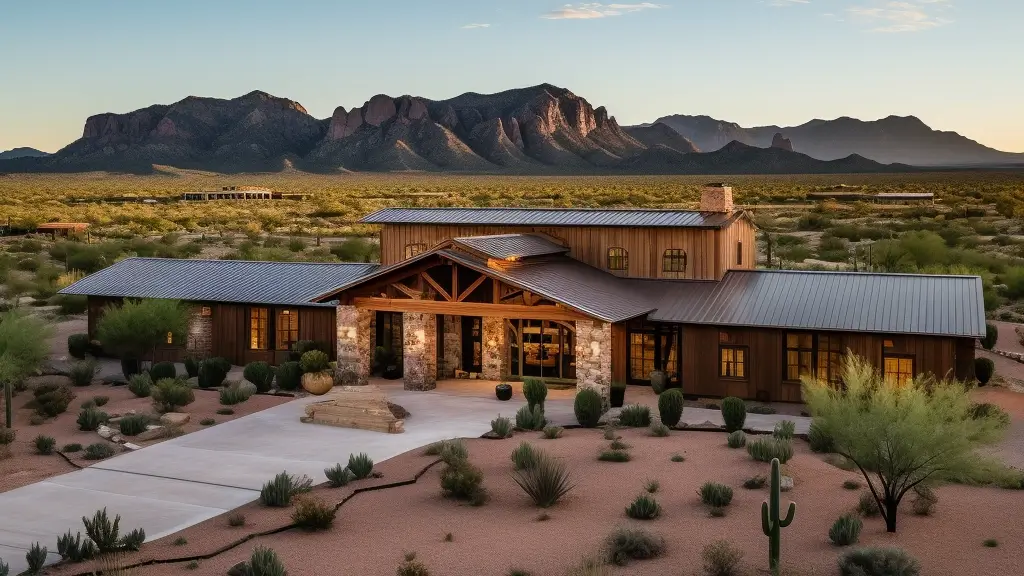Barndominiums Vs. Typical Residences: a Thorough Contrast of Way Of Life and Functionality
The choice between barndominiums and typical homes includes numerous aspects, consisting of way of life choices and useful demands. Barndominiums are identified by their open layouts and flexibility, frequently appealing to those that prioritize common living and convenience.
Summary of Barndominiums
Barndominiums, an unique real estate fad obtaining appeal throughout different regions, blend the rustic charm of barn-style architecture with the functionality of modern space. These unique frameworks normally include a steel or wood framework, combining open flooring strategies and high ceilings with energy-efficient functions. Commonly located on extensive rural homes, barndominiums provide home owners the possibility to appreciate a tranquil way of life while offering ample room for different activities.
The versatility of barndominiums expands beyond their aesthetic allure; they can offer as both living quarters and useful areas for hobbies, workshops, or perhaps small companies. Their flexible style enables very easy personalization, accommodating varied household demands and preferences. Many proprietors appreciate the reduced maintenance needs connected with steel home siding and roofing, adding to long-term durability.

Qualities of Standard Residences
Stressing timeless design and comfort, standard homes are identified by their distinctive building designs, which usually reflect historic impacts and local visual appeals. Typical attributes consist of balanced exteriors, gabled roofs, and an emphasis on craftsmanship, resulting in a warm and inviting environment.
Typical homes often incorporate components such as crown molding, wainscoting, and wood floor covering, boosting their timeless charm. They normally include several spaces with defined purposes, advertising family members interaction while enabling for personal privacy. see website. The format often consists of official living and eating locations, which contribute to enjoyable visitors and holding family events
Outside materials such as brick, wood, or stone are frequently made use of, adding to durability and a sense of durability. Barndominium builder. Furthermore, numerous conventional homes are developed with front porches or stoops, fostering a feeling of area and connection with the neighborhood
Landscaping plays a substantial duty in standard home style, with well-kept gardens and paths that boost visual appeal - click here. In general, conventional homes embody a sense of fond memories and security, attracting those who value heritage and a more structured living setting
Price Contrast
Usually, an expense comparison in between barndominiums and standard homes exposes significant distinctions in building and construction costs and overall financial investment. Barndominiums, usually built from metal or steel structures, usually incur reduced product and labor costs than standard homes constructed from wood and brick. The streamlined design of barndominiums can equate to decreased construction times, further lowering labor expenses and expediting tenancy.
Generally, the price per square foot for a barndominium varies from $100 to $150, while traditional homes can differ widely, typically dropping between $150 and $300 per square foot, depending upon location, products, and design intricacy. This cost variation makes barndominiums an attractive alternative for budget-conscious buyers looking for larger home without sacrificing high quality.
Additionally, barndominiums may bring about long-lasting financial savings through reduced maintenance expenses, power efficiency, and insurance coverage prices. Their resilient building and construction products frequently call for much less upkeep gradually contrasted to conventional homes. It is crucial to consider that while preliminary expenses might be lower for barndominiums, the last financial investment will certainly also depend on individual customization and preferred features, which can affect the total expenditure in both real estate kinds.
Way Of Living and Room Considerations
When considering lifestyle and space, barndominiums use an one-of-a-kind adaptability that interest a selection of home owners. These hybrid frameworks incorporate household coping with useful room, usually including open flooring strategies that can be adapted to suit individual demands. This adaptability is especially beneficial for families or individuals looking for a tailored living setting, enabling diverse uses such as office, workshops, or entertainment locations.

Additionally, the visual charm of barndominiums can deal with both rustic and contemporary preferences, making them a versatile option for various style choices (Barndominium builder). Eventually, the choice between a barndominium and a typical home typically pivots on how well each alternative aligns with the house owner's way of living goals and spatial demands, highlighting the importance of thinking about individual priorities in the decision-making process
Ecological Influence and Sustainability
The environmental impact and sustainability of barndominiums present engaging benefits compared to conventional homes. Mostly created from steel my sources and other resilient products, barndominiums are usually built utilizing recycled resources, lowering the demand for new materials and lessening waste. Their layout typically emphasizes open areas, which can cause reduced power intake for cooling and heating compared to traditional homes with more segmented layouts.
Furthermore, barndominiums can integrate lasting functions such as photovoltaic panels, rain harvesting systems, and progressed insulation strategies, boosting their power performance. The convenience of their style enables house owners to incorporate these innovations a lot more effortlessly than in lots of standard homes, which may need comprehensive retrofitting.
In addition, barndominiums typically require less resources for construction due to their easier, much more efficient styles (learn more). On the whole, barndominiums stand for a forward-thinking method to sustainable living, straightening with contemporary environmental top priorities.
Final Thought
In summary, the selection between barndominiums and standard homes hinges on private way of living preferences and practical needs. Barndominiums, with their open designs and lasting products, cater to those looking for adaptability and communal living.